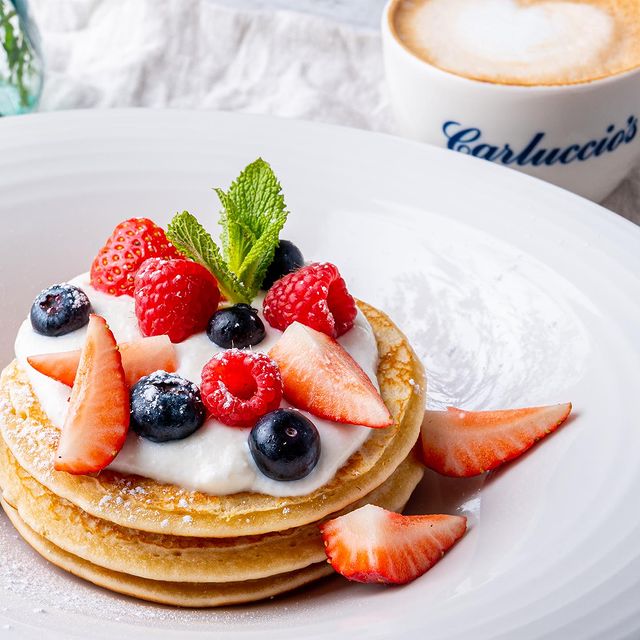Soffritto: Unlocking the Magic of The Italian Sauce Foundation
At Carluccio's, we believe the true secret to great Italian food isn't just the final dish—it's the silent, flavourful foundations built long before the pasta hits the water. We’re talking about Soffritto.
Often overlooked, the soffritto is arguably the single most important technique in regional Italian cooking. It's the aromatic base that gives depth, complexity, and that unmistakable warmth to countless Italian classics.
🤔 So, What Exactly Is Soffritto?
The term soffritto literally translates to 'under-fried' or 'slowly fried.' It is not a dish itself, but a preparation: a simple mixture of finely chopped vegetables slowly sautéed in olive oil (or sometimes butter/lard in the North) until they are soft, translucent, and sweetly fragrant.
The Carluccio's Trio (The Classic Italian Battuto)
The traditional Italian soffritto is made from a battuto (the raw, finely chopped mix), which consists of just three ingredients:
-
Onion
-
Carrot
-
Celery
These three ingredients are chopped very finely and cooked very slowly. This patient process releases their essential oils and natural sugars, creating a sweet, earthy, and savoury base that enriches anything cooked on top of it.
Are There Different Soffrittos?
Absolutely. While the onion-carrot-celery base is central to much of Northern and Central Italian cooking, the soffritto changes regionally to reflect local traditions and ingredients.
-
Northern Soffritto (Emilia-Romagna): Often uses butter or lard instead of olive oil, and sometimes includes a small amount of Pancetta (or a similar cured pork fat) for an even richer, meatier flavour base for Ragu.
-
Southern Soffritto (Naples/Sicily): In regions like Campania and the South, the base may sometimes drop the carrot and celery and focus on onion and/or garlic, often with chilli, herbs, and more robust olive oil, particularly for seafood or vegetable sauces.
-
Global Confusion: The term 'Sofrito' is also used in Spanish, Portuguese, and Latin American cooking, but these are completely different mixtures! A Puerto Rican Sofrito, for instance, is a liquid purée of peppers, culantro, and garlic—a world away from the slow-cooked Italian base.
The Burning Question: Garlic and Onion Together?
This is where Italian cooks can get very passionate!
In many traditional regional recipes, particularly those using the classic onion-carrot-celery soffritto, garlic is often omitted entirely. The rule of thumb for many Italians is:
"If you use onion in your soffritto, you generally don't use garlic."
The reason? Both are powerful aromatics, and traditional cooking often seeks to highlight the flavour of one or the other, not have them compete. The onion in the soffritto adds sweetness and body to the sauce.
However, this is not a hard-and-fast rule!
-
Many modern Italian-American and even some regional Italian recipes do combine both, often adding the finely minced garlic late—after the onion has softened—to prevent it from burning and turning bitter.
-
Dishes where garlic is the star (like Aglio e Olio) or a major player (like many seafood or vegetable sauces) will drop the onion altogether.
What Sauces Use Soffritto as a Base?
Soffritto is the foundation for almost every rich, cooked sauce you can imagine:
-
Ragù: The cornerstone of any authentic meat sauce.
-
Tomato Sauces (Sugo al Pomodoro)a: Creates the essential depth and sweetness before the tomatoes are added.
-
Soups and Stews: From Minestrone or Ribollita to lentil soups, soffritto starts the entire flavour process.
-
Risotto: It's the first thing you cook before toasting the rice (though you will rarely find carrot in this soffritto).
-
Braised Meats (Stufato): Used to build the flavour base before adding the meat and liquid.
⏳ How Long Should a Soffritto Cook For?
Patience is a virtue in the Italian kitchen, and nowhere is this truer than with soffritto. This is not a quick sauté!
The purpose is to "sweat" the vegetables—to draw out their moisture and slowly cook them until they are completely soft and translucent, but not browned or caramelised. If you rush it, you will end up with crunchy vegetables, not a dissolved flavour base.
The Carluccio's Rule: On a very low heat, your soffritto should cook for at least 10–15 minutes.
Stir occasionally, and listen to it. It should sizzle softly, not aggressively fry. If it looks dry, add a splash more of high-quality Extra Virgin Olive Oil. Once the celery is soft, the carrot has lost its rawness, and the onion is transparent, you have a beautiful, golden soffritto—ready to become the heart of your next masterpiece.
Would you like to try our recipe for a classic slow-cooked Beef Ragù, which starts with a perfectly prepared soffritto?







